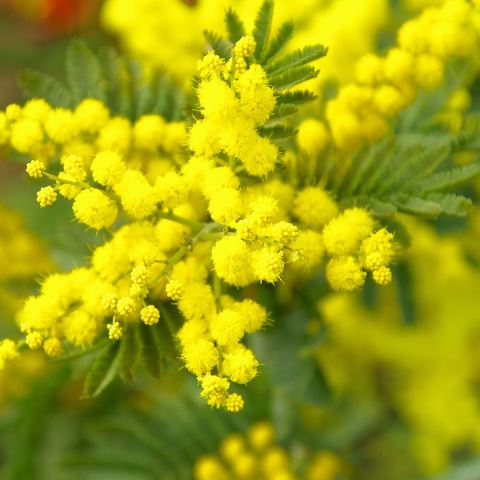[Versione italiana dell’articolo – Profumo di Mimosa, Profumo di Rinascita]
The beautiful mimosa accompanying Women’s Day every 8 March is a plant from distant lands – its origin is traced back to Tasmania, where it thrives in damp soil and partial or direct sun.
Today, this plant is also widespread in Europe, where there is a temperate climate; it has acclimatised so well that there is, for example, a Mimosa Route from Bormes-les-Mimosas to Grasse.

Its delicious perfume is used in perfumery and emotional aromatherapy: it is usually found as an absolute extraction. Approaching the olfaction of mimosa is a bit like approaching its presence, the lightness of its spherical, pompon-like flower heads.
In the scent of mimosa there is a promise of light: a powdery note arrives like the caress of gentle hands, and its radiant luminosity, like a ray of sunshine in spring that slowly intensifies, brings well-being and calm.
It is an essence indicated for people who need to rediscover the rhythm of their breathing and a dimension of lightness; for those who want to look to the present and the future, aware of their past. Mimosa is not a surface plant, on the contrary: its radiance appears conscious, meditated. It is undoubtedly an essence for meditation, to be sniffed whenever we want to find ourselves with love and delicacy.
Its perfume is quite persistent and will not fail to amaze us with its many evolutions as time passes.
This fragrance is present in many perfumes, including Le Mimosa by Annick Goutal; Mimosa and Cardamom by Jo Malone; Une Fleur de Cassie by Frederic Malle. For those who like historical scents, mimosa is present in Farnesiana by Caron (1947).
The mimosa I use and have described in this article is an absolute by L’Aromoteca. Happy 8 March to all!
